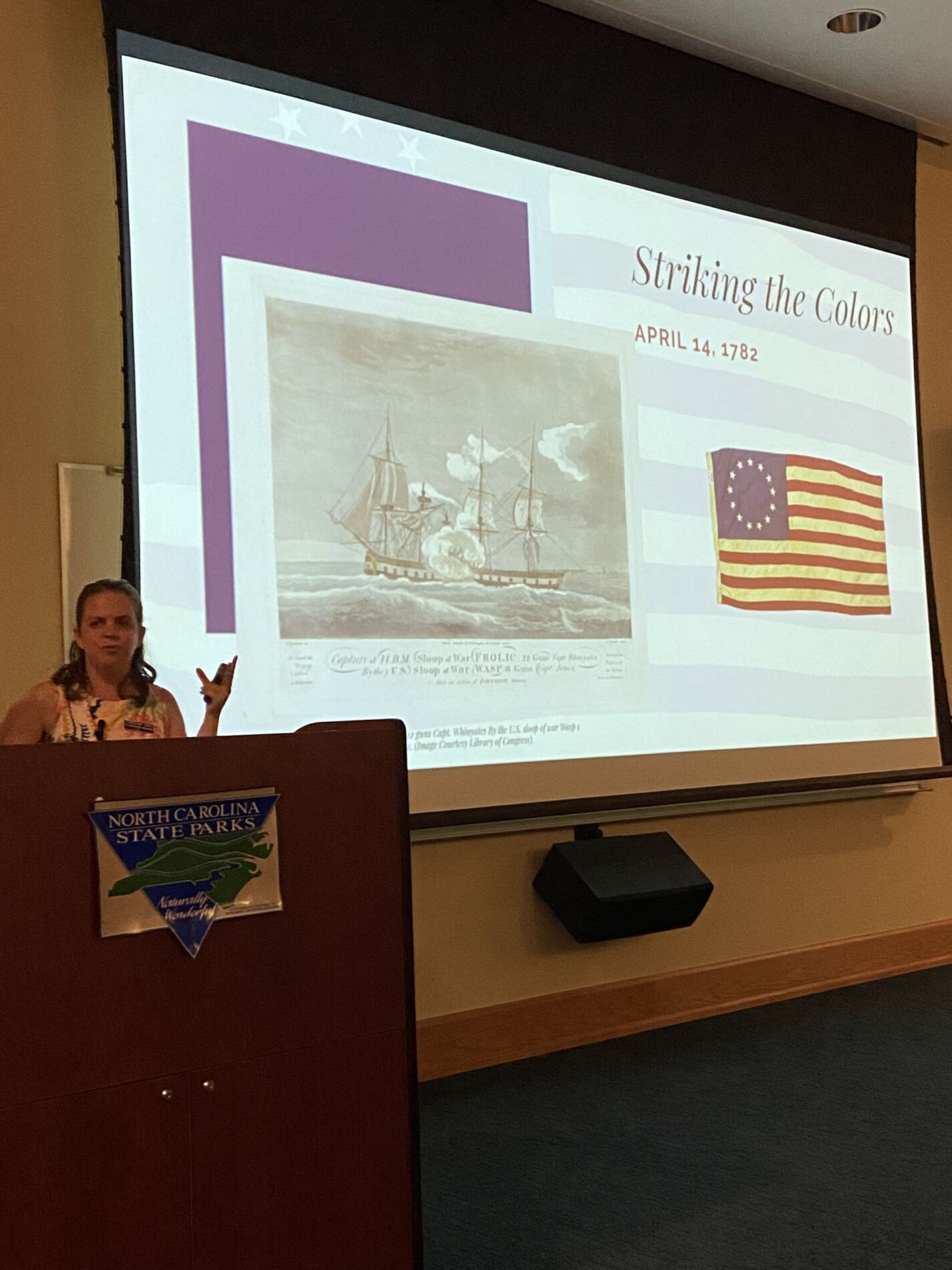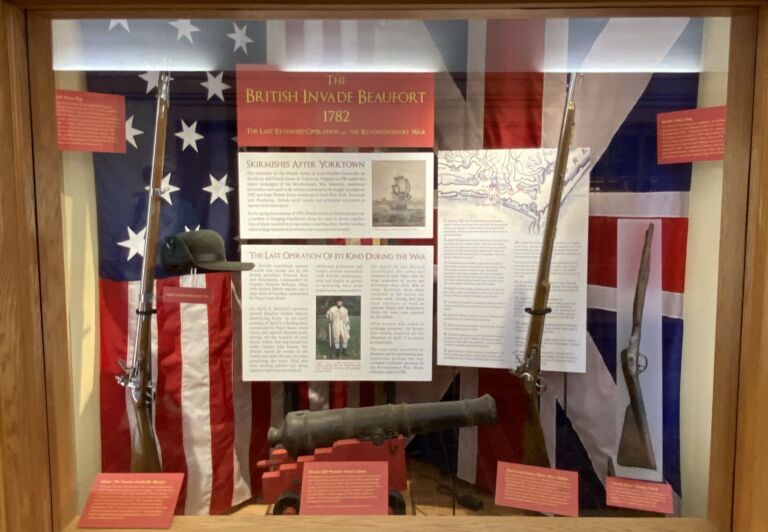Most people consider the Battle of Yorktown to mark the end of the American Revolution, but did you know that some historians have called the Battle of Beaufort, which took place after Yorktown, the last engagement of the American Revolution?
I sure didn’t.
Last week at Fort Macon State Park, I attended a program led by Christine Brin, associate education curator at the North Carolina Maritime Museum, that discussed and explored the fascinating history of this days-long altercation that included kidnapping, raiding, pillaging, using fire rafts, cannonading, and plundering the small seaport of Beaufort, North Carolina.

The Battle of Beaufort
The battle occurred from April 4–17, 1782. The interesting thing is that the battle took place more than six months after the Battle of Yorktown, which ended with British General Lord Cornwallis surrendering to General George Washington on Oct. 19, 1781. Cornwallis’ surrender at Yorktown was followed by a period of treaty negotiations, and the Treaty of Paris was signed on Sept. 3, 1783, to end the Revolutionary War officially.
But in early April 1782, a wily party of raiders led by British Major Andrew Deveaux and made up of mostly Tory militia and British dragoons based in the still actively British-held Charleston, South Carolina, arrived in the Beaufort harbor in four sea vessels. They were in search of necessary supplies such as grain, salt, and other stores. Initially, they encountered whalers based at Shackleford Banks and lied convincingly that their main ship was a Patriot privateer vessel and that the other vessels were “prizes.” The raiders said that they needed help crossing the shoals into the harbor. Soon, men from Beaufort arrived in pilot boats to assist and were taken captive. Other rowboats also arrived, only to be taken hostage as well. A local militia captain rowed out to see what was going on, and he was captured, too.
Captain John Easton, the local militia leader, became alarmed and put out a call for assistance around Carteret County. Meanwhile, on the morning of April 5, landing parties from the Tory force came ashore in the town and began plundering people’s homes. The frightened citizens began running for safety.
Until enough militiamen arrived to head off the British force, the shocked townspeople were on the run. They fell back to a point across what was then Town Creek Bridge (when Town Creek was much wider), and the militia made a stand there with townspeople setting up camp behind them on what is now Live Oak Street. Colonel John Easton wrote a report to the new governor of North Carolina, Thomas Burke, saying:
I have heard of cutting open of Beds, strowing the feathers over the floors, and in the Streets, and destroying every Article of furniture they could not bear off, taking the Clothes from Women’s backs, searching of their pockets, and otherwise abusing them in a very cruel manner, not leaving many a mouthful of provisions to Eat.
Soon, enough militiamen to counter the British force arrived, and they made their way back to the ships. After a few days of exchanging cannon and musket fire, back-and-forth prisoner swaps, and waiting for the wind to change, the British sailed out of Beaufort harbor back to Charleston.
All prisoners except for a few enslaved people were eventually released, and the invading force acquired much of the provisions they came for before setting sail under pressure from the Patriot militia. The British forces suffered one dead, several wounded, and a few captured. No militiamen were killed.
Beaufort today
The Fort Macon Visitor Center has a museum display that tells the story of the Battle of Beaufort. If you are ever in Beaufort and want to get an idea for where the off-and-on skirmishes of the battle occurred, start at the waterfront between Fulford and Gordon Streets, where the militiamen had a small earthen fort. Then make your way up towards the point where Live Oak Street splits to the left to become NC Highway 101, where the citizens camped behind militia lines. Right past the Beaufort Fire Department where you see guardrails on the sides of the road is Town Creek, which was a much larger creek in 1782.

If you are familiar with today’s Beaufort, here’s something else to keep in mind. Most of the area where shops and stores are today (and where the Rachel Carson Reserve lies across Taylor’s Creek) was open harbor in the late 1700s. The marauding ships would have been in plain view. Carrot Island at the east end across Taylor’s Creek does appear on old maps and was a factor in the skirmishes.
For more information, visit the display at the Fort Macon Visitor Center or see the following articles that discuss the battle:
- The American Revolution in North Carolina: Beaufort (April 4–17,1782)
- Trojan horse on the water: The 1782 attack on Beaufort, North Carolina
- Beaufort raid: Militia resist a British supply run
A recording of Christine Brin’s lecture is available online.
The post The empire strikes back, weakly: The Battle of Beaufort first appeared on John Locke Foundation.
Click this link for the original source of this article.
Author: Bob Rosser
This content is courtesy of, and owned and copyrighted by, https://www.johnlocke.org and its author. This content is made available by use of the public RSS feed offered by the host site and is used for educational purposes only. If you are the author or represent the host site and would like this content removed now and in the future, please contact USSANews.com using the email address in the Contact page found in the website menu.





